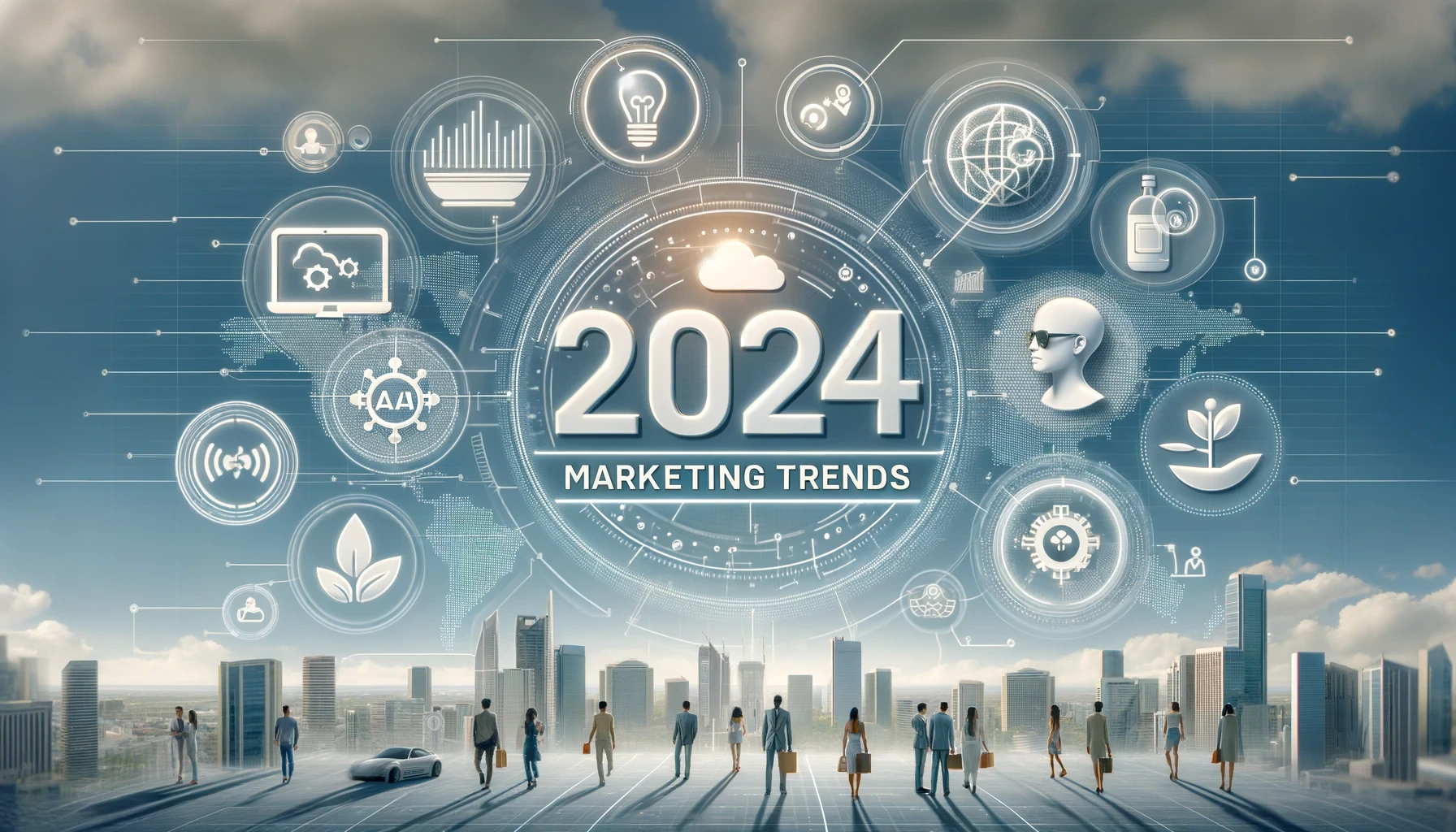Revolutionize Sales 2024:Innovative Performance Marketing

Embracing AI-powered personalization in 2024 offers businesses a transformative approach to engaging customers and driving growth. By leveraging artificial intelligence, businesses can analyze vast amounts of data to understand individual preferences and behaviors, allowing for highly tailored and relevant experiences.
AI-powered personalization enables businesses to deliver targeted content, product recommendations, and marketing messages across multiple channels, including websites, email, social media, and mobile apps. This level of customization enhances customer satisfaction, increases engagement, and ultimately drives conversions and sales.
Moreover, AI algorithms continuously learn and adapt based on user interactions, further refining personalization efforts over time. This iterative process ensures that customer experiences remain dynamic and relevant, even as preferences evolve.
In addition to improving the customer experience, AI-powered personalization also benefits businesses by optimizing marketing ROI, reducing churn, and fostering long-term customer loyalty. By delivering personalized experiences at scale, businesses can differentiate themselves in competitive markets and position themselves for sustained success in 2024 and beyond.
Leveraging augmented reality (AR) experiences involves incorporating digital elements into the real world, enhancing user interactions and engagement. AR technology overlays virtual objects, information, or animations onto the user’s physical environment, creating immersive and interactive experiences.
Businesses can utilize AR in various ways to:
Enhance Product Visualization: AR allows customers to visualize products in their real-world environment before making a purchase. This immersive experience can boost confidence and increase conversion rates for online shoppers.
Improve Customer Engagement: AR experiences can captivate and entertain customers, driving higher engagement levels compared to traditional marketing methods. Interactive AR applications encourage users to actively participate, leading to memorable brand interactions.
Facilitate Virtual Try-Ons: AR enables virtual try-on experiences for products like clothing, accessories, and cosmetics. By allowing customers to virtually try products before buying, businesses can reduce return rates and enhance the shopping experience.
Enhance Education and Training: AR technology can be used to create interactive educational content and training simulations. From medical training to employee onboarding, AR experiences provide hands-on learning opportunities in a safe and immersive environment.
Augment Location-Based Experiences: AR can enrich location-based experiences by providing contextual information, directions, and points of interest overlaid on the user’s surroundings. This enhances navigation and exploration in both urban and outdoor environments.
Drive Brand Differentiation: By incorporating AR into marketing campaigns and customer experiences, businesses can differentiate themselves from competitors and leave a lasting impression on customers. AR experiences showcase innovation and creativity, strengthening brand identity and loyalty.
Collect Data and Instsigh: AR applications can gather valuable data on user interactions, preferences, and behavior. This data can inform personalized marketing strategies, product development decisions, and optimization efforts.

Implementing voice search optimization involves optimizing your website and content to cater to the growing number of users who rely on voice-activated assistants like Siri, Alexa, and Google Assistant to perform online searches. Here are some key steps to effectively implement voice search optimization:
Understand Voice Search Trends: Research and analyze voice search trends to understand how users interact with voice assistants and the types of queries they commonly make.
Optimize for Conversational Queries: Voice searches tend to be more conversational. Optimize your content to match the natural language used in voice queries, including long-tail keywords and question-based phrases.
Focus on Local SEO: Many voice searches are location-based, so optimize your website for local search by including location-specific keywords and ensuring your business information is accurate and consistent across online directories.
Improve Website Speed and Mobile-Friendliness: Voice search users often expect quick answers, so optimize your website for speed and ensure it is mobile-friendly to provide a seamless user experience.
Create Structured Data Markup: Implement structured data markup, such as Schema.org markup, to provide search engines with additional context about your content, making it easier for them to understand and rank your website for relevant voice search queries.
Optimize for Featured Snippets: Voice assistants often pull answers from featured snippets in search results. Optimize your content to appear in featured snippets by providing concise, relevant answers to common questions.
Create FAQ Pages and How-To Guides: Develop content that addresses common questions and provides step-by-step guides to help users find the information they’re looking for through voice search.
Test and Monitor Performance: Continuously monitor your website’s performance in voice search results and make adjustments as needed based on user behavior and evolving trends.
Harness the Power of Micro-Influencers
Harnessing the power of micro-influencers involves collaborating with individuals who have smaller but highly engaged audiences within specific niche markets. These influencers typically have a more intimate connection with their followers, leading to higher levels of trust and authenticity in their recommendations.
By partnering with micro-influencers, brands can benefit from:
Targeted Reach: Micro-influencers often have followers who share similar interests or demographics, allowing brands to reach specific niche audiences more effectively.
Authenticity: Micro-influencers are perceived as more authentic and relatable compared to celebrities or macro-influencers, making their recommendations more genuine and trustworthy.
Cost-Effectiveness: Collaborating with micro-influencers is often more affordable than working with larger influencers, making it an attractive option for brands with limited marketing budgets.
Engagement: Micro-influencers typically have higher engagement rates, as their followers are more likely to actively interact with their content and recommendations.
Diverse Content: Partnering with multiple micro-influencers allows brands to diversify their content and reach different segments of their target audience through various channels and platforms.
Optimize for Local Search and Geotargeting
Optimizing for local search and geotargeting involves tailoring online content and marketing strategies to target audiences in specific geographic locations. This approach is crucial for businesses looking to attract customers from their local area or target markets in different regions.
Here are key strategies to optimize for local search and geotargeting:
Claim Your Google My Business Listing: Ensure your business is listed accurately on Google My Business with correct contact information, business hours, and location details. This improves visibility in local search results and allows customers to find your business easily.
Optimize Website Content for Local Keywords: Incorporate location-specific keywords into website content, meta tags, and headings to improve visibility in local search queries. Focus on relevant terms that potential customers in your target area are likely to search for.
Create Location-Specific Landing Pages: Develop landing pages tailored to specific geographic locations or target markets. Customize content, imagery, and calls to action to resonate with local audiences and address their unique needs or preferences.
Encourage Customer Reviews and Testimonials: Positive reviews and testimonials from satisfied customers can enhance your business’s credibility and visibility in local search results. Encourage customers to leave reviews on platforms like Google, Yelp, and Facebook to boost your online reputation.
Use Geotargeted Ads: Utilize geotargeting features in online advertising platforms to deliver targeted ads to users based on their location. This allows you to reach potential customers in specific geographic areas and tailor ad messaging accordingly.
Optimize for Mobile and Voice Search: With the increasing use of mobile devices and voice search, ensure your website is mobile-friendly and optimized for local queries. Voice search optimization involves using natural language phrases and long-tail keywords that reflect how people speak when conducting voice searches.
Engage with Local Community: Get involved in local events, sponsorships, or partnerships to increase brand awareness and build connections within the community. Participating in local initiatives can also generate local backlinks and social mentions, further boosting your visibility in local search results.

